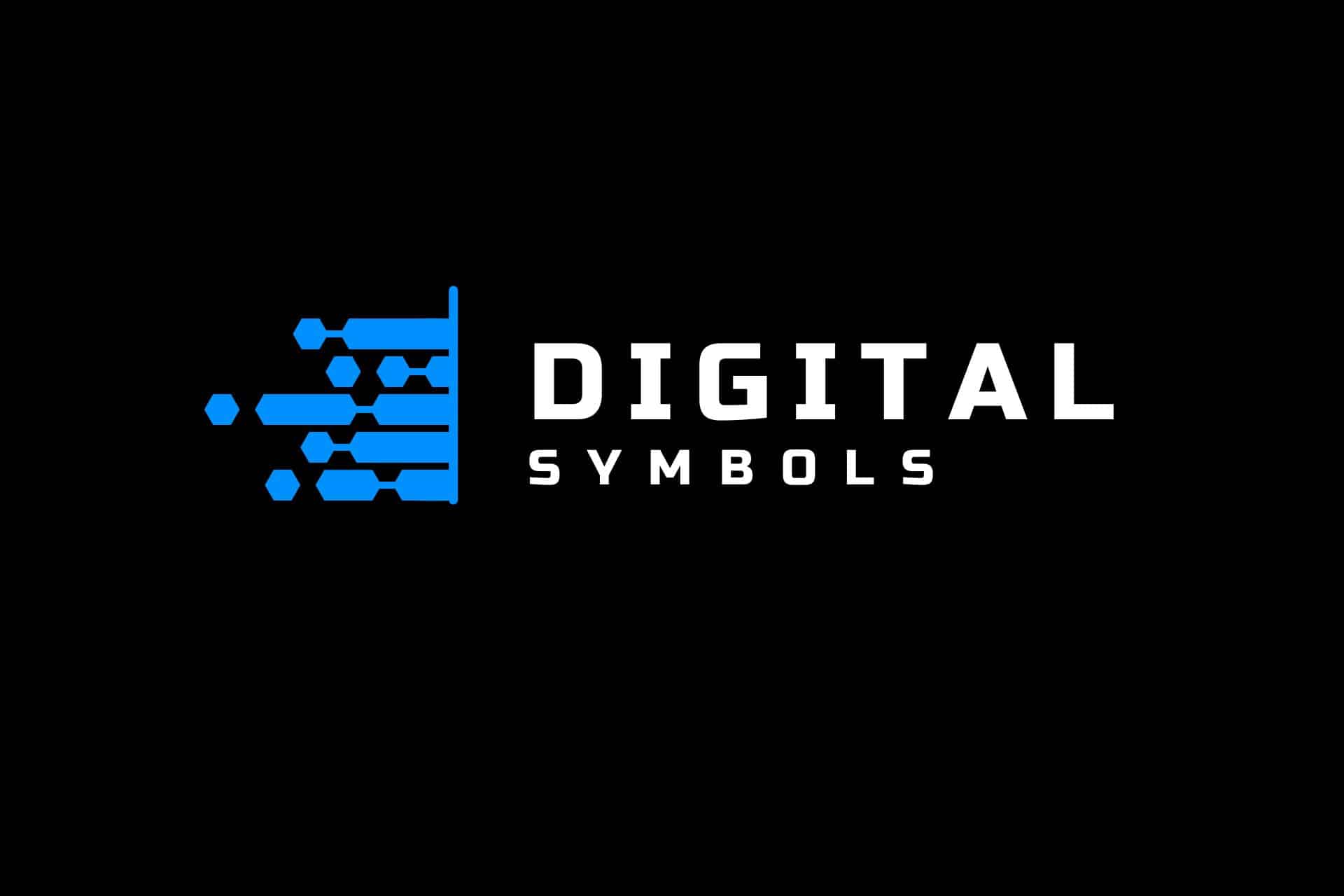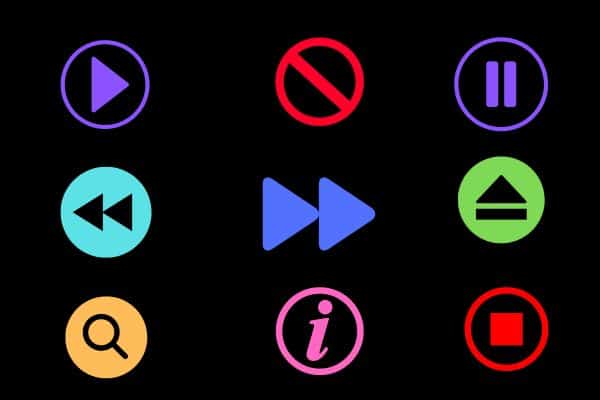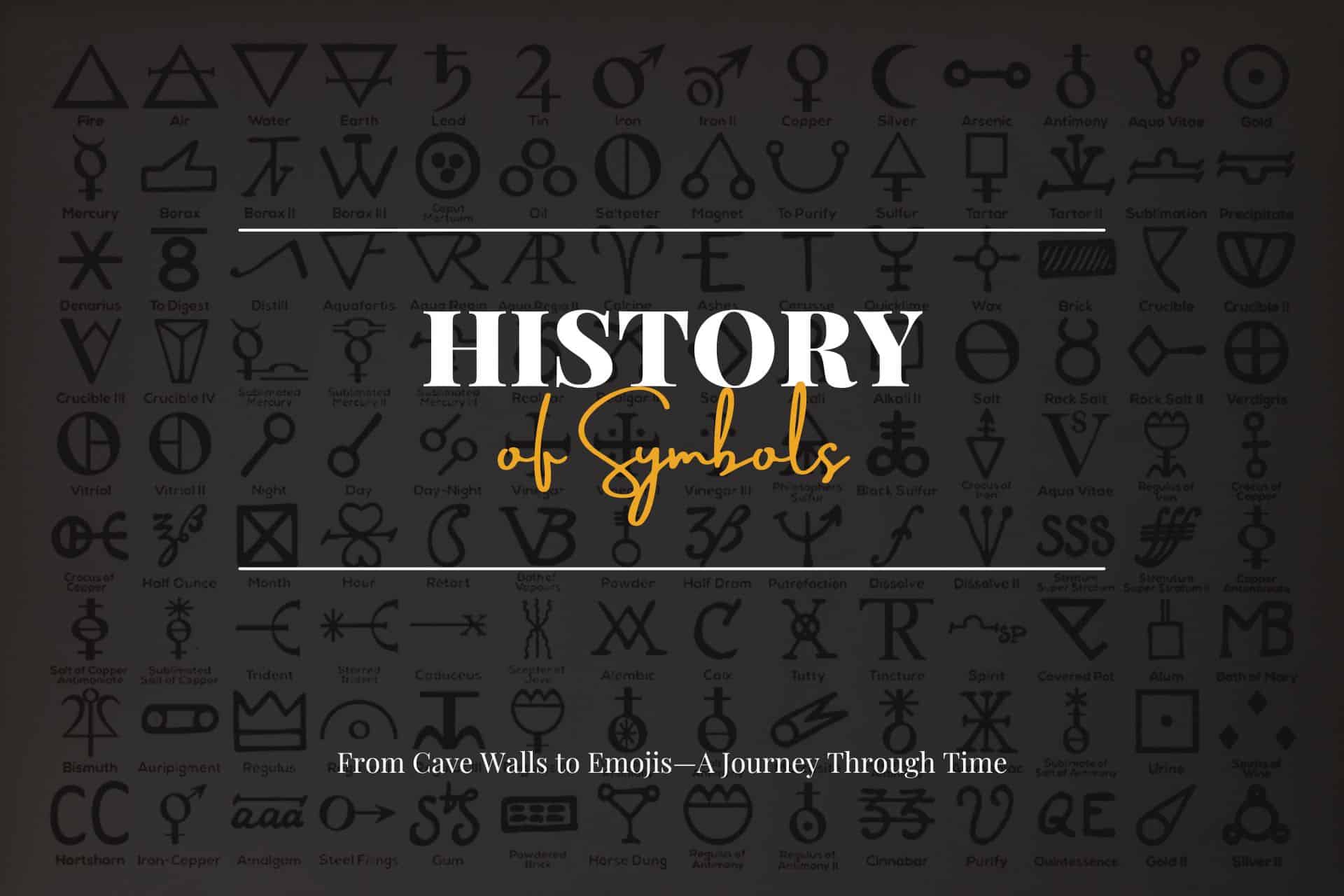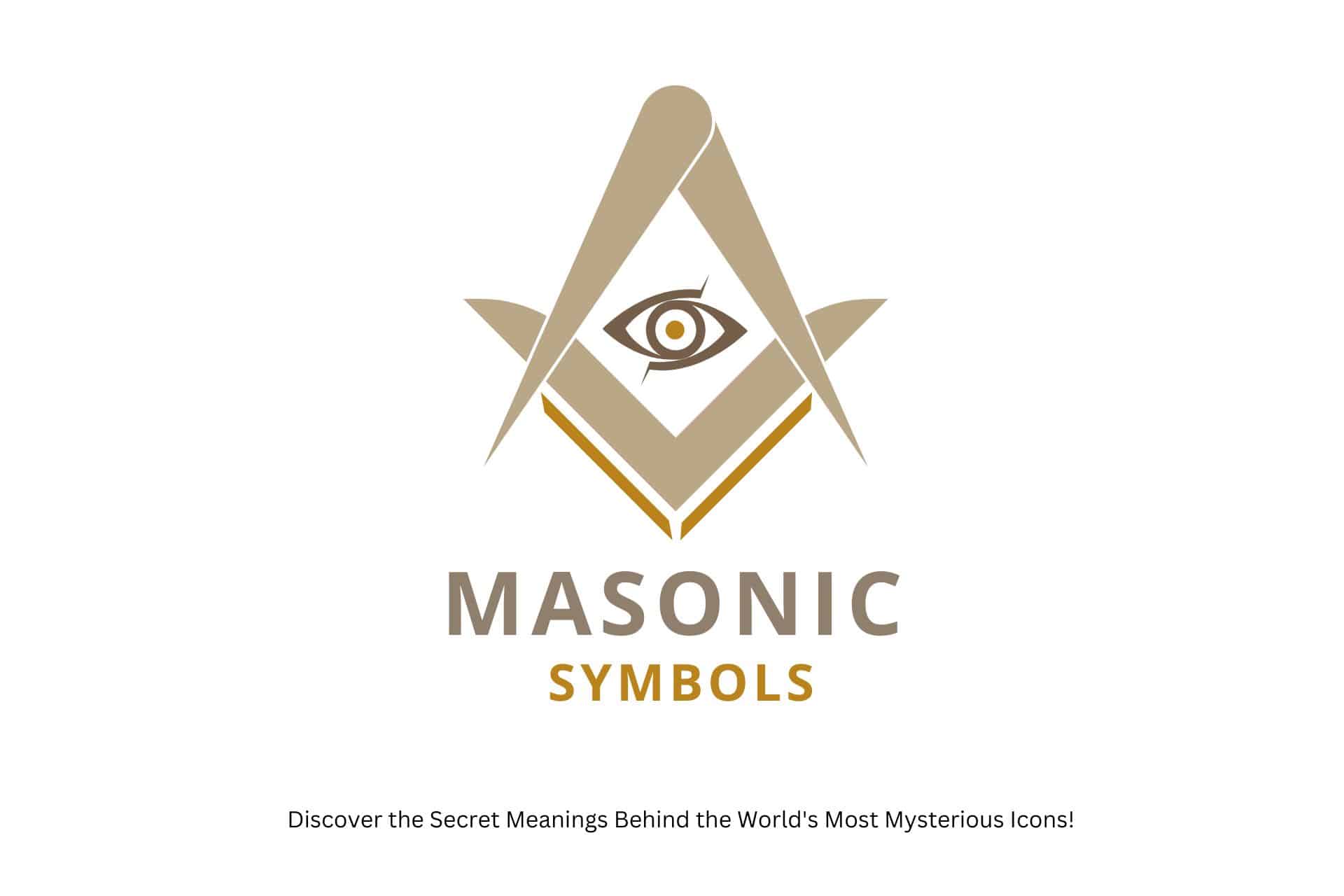Your Gateway to Understanding the Digital World!
Are you curious about the stories behind the digital symbols you encounter daily? Have you ever wondered what these icons and emojis signify beyond their surface appearance?
You’re not alone. This article will help you understand these omnipresent symbols‘ rich history, diverse meanings, and global significance.
Here, we’ll provide a concise and informative overview of digital symbols, revealing their evolution and cultural impact. Whether you’re a tech enthusiast, a design fan, or a digital citizen keen to learn more, you’ll find value in these insights.
Continue reading to uncover the fascinating world of digital symbols and enhance your digital literacy. Welcome to the hub of knowledge, where clarity meets curiosity.
Let’s get started!

Here’s What You Will Find

Key Takeaways
Digital Symbols
Digital Symbols as a Universal Language: Digital symbols, including icons and emojis, have become a universal language in our digital world. They transcend linguistic barriers, making technology accessible and communication more expressive across different cultures and languages.
Evolution with Technology: The evolution of digital symbols mirrors the advancement of technology. From the early days of simple icons in graphical user interfaces to today’s diverse and complex emojis, these symbols have continuously adapted to enhance user experience and communication in the digital age.
Impact on Communication: Digital symbols significantly impact how we communicate. They add clarity, efficiency, and emotional depth to our digital interactions, making them integral in personal messaging and professional software interfaces.
Cultural and Historical Significance: The history of digital symbols, from their origins in early computing systems to their widespread use in modern technology, reflects a fascinating intersection of design, culture, and communication. These symbols are not just tools; they reflect our society’s evolution in the digital era.
What are Digital Symbols?
Digital symbols are graphical representations used in digital interfaces, such as icons, emojis, and logos, that convey information, functions, or expressions. They simplify communication and navigation in our digital world.
Digital symbols’ primary purpose is to transcend linguistic barriers, offering a universal language that can be intuitively understood by users worldwide. They are crafted to be immediately recognizable, enabling users to navigate and interact with digital environments more efficiently.
Digital symbols encapsulate complex concepts or actions in a simple, visual form, making them integral to the user-friendly experience in our digital world.
Their significance lies in their ability to facilitate quick and clear communication. In an age of digital interaction, these symbols are crucial in bridging the gap between technology and users, making complex functionalities accessible and understandable to a diverse audience.
Whether indicating a command, representing a notification, or conveying a message, digital symbols have become an indispensable part of our daily digital lexicon. They enhance our interactions and understanding of the vast landscape of digital technology.
Understanding digital symbols is imperative today, as they are integral to our interaction with technology. They make digital communication more intuitive and engaging, allowing for a seamless blend of technology and human expression.
As we continue to rely more on digital platforms for our everyday interactions, the importance of these symbols in creating a user-friendly and emotionally connected digital environment cannot be overstated.
Types of Digital Symbols
Exploring the Diversity in Digital Communication
In the intricate world of digital communication, symbols take on various forms, each serving a unique function and purpose. Understanding the different types of digital symbols is key to appreciating how they enrich our interactions and experiences in the digital space.
Let’s explore the primary digital symbol types and their distinctive roles.
Interface Icons
Interface icons are perhaps the most widely recognized type of digital symbols. These include the small, intuitive images used in software and device interfaces, like the trash can for deletion, the house for home, or the magnifying glass for search.

They are designed for rapid recognition, enabling users to navigate digital environments easily. Interface icons are the silent guides of the digital world, facilitating user interaction with various technologies.
Emojis
Emojis are colorful and expressive faces and icons used in digital communication. They range from simple smiley faces to many symbols representing emotions, objects, activities, etc.

Emojis have revolutionized how we express feelings and ideas in digital texts, adding a layer of emotional context to our conversations. They are a testament to the human need for emotional expression, even in the digital sphere.
Indicator Symbols
These symbols include battery life indicators, Wi-Fi strength symbols, and Bluetooth connection icons. Indicator symbols provide real-time information about the status of our devices or the services they are accessing.

They are crucial for understanding our technology’s functionality and connectivity status, often displayed in the status bars of phones, computers, and other digital devices.
Pictograms in User Interfaces
Pictograms are simple, illustrative symbols that straightforwardly represent an object or action. These can be found in various applications and websites, helping users quickly identify functions and features.

Pictograms are often used where text labels might be insufficient due to space constraints or the need for rapid recognition.
Instructional Symbols
These symbols guide users through tasks or processes in digital environments.

Examples include the play, pause, and stop buttons in media players or the arrows used in navigation apps. Instructional symbols are direct, often universally understood, and integral to technology instructional design.
Branding and Logos
Many companies use digital symbols as part of their branding. These logos are designed to be memorable and easily recognizable, embodying the brand’s essence in a simple visual form. In the digital world, logos often double as icons, linking users directly to a company’s website or app.

Each type of digital symbol plays a significant role in our interaction with technology. They make our digital experiences more intuitive, efficient, and enjoyable.
From conveying complex instructions through simple imagery to expressing emotions that words cannot capture, digital symbols are the unsung heroes of our digital age, silently shaping our interaction with the vast digital universe.
Examples of Digital Symbols
Navigating the Visual Language of Technology
Digital symbols are ubiquitous in our everyday technology use, yet we often overlook their significance and efficiency in our digital interactions.
To better understand their impact and functionality, let’s explore some notable examples of digital symbols that we encounter regularly. These examples illustrate how these symbols have become integral in simplifying and enhancing our digital experience.
- Power Symbol: One of the most universally recognized digital symbols is the power symbol, a circle with a vertical line passing through the top. This symbol signifies the power on/off status and is a staple on almost every electronic device, symbolizing the intersection of functionality and universal design.
- Wi-Fi Icon: The Wi-Fi icon, represented by concentric arcs radiating outward, is instantly recognizable and indicates the presence or strength of a wireless internet connection. It’s a vital symbol in our increasingly connected world, signifying connectivity and access to digital networks.
- USB Logo: The Universal Serial Bus (USB) symbol, a trident shape with a circle, square, and triangle at the end of each prong, represents one of the most common interfaces for connecting peripheral devices to computers. Its design symbolizes universality and ease of connection.
- Bluetooth Symbol: The Bluetooth symbol, a combination of the Nordic runes for H and B (Harald Bluetooth’s initials), indicates Bluetooth connectivity. This symbol represents the technology’s ability to wirelessly connect devices for communication and data transfer.
- Trash Can Icon: Commonly found in digital interfaces, the trash can icon is the universal symbol for deletion or waste. It offers a clear visual cue to users, guiding them to remove files or data they no longer need.
- Heart Emoji: The heart emoji, a symbol of love and affection, is one of the most used emojis globally. It transcends language barriers, allowing people to express emotions in a universally understood way in digital communication.
- Play and Pause Buttons: These symbols, represented by a right-pointing triangle for ‘play’ and two vertical lines for ‘pause,’ are standard in media players. They are intuitive symbols that control media playback and illustrate the integration of instructional symbols in everyday technology.
- Magnifying Glass Icon: The magnifying glass icon is a staple in digital interfaces. It often represents the search function and invites users to explore and find the information they seek, embodying the concept of search and discovery.
- Cloud Symbol: Representing cloud computing or storage, this symbol illustrates storing data or accessing services over the internet rather than on a physical device. It symbolizes the shift towards remote, network-based computing.
- Battery Indicator: A common symbol in mobile devices, the battery indicator shows the current charge level of the device’s battery. This symbol is critical for users to manage their device usage and charging habits.
These examples of digital symbols demonstrate how they serve as the building blocks of digital communication and interaction.
By providing intuitive visual representations of functions, actions, and statuses, digital symbols bridge the gap between complex technology and user experience, making the digital world more accessible and navigable.
The Origin of Digital Symbols
Tracing the origin of digital symbols takes us back to the early days of computing. The necessity for intuitive, user-friendly interfaces in the burgeoning field of personal computing gave rise to the first icons and graphical elements.
Susan Kare, a key figure in this evolution, crafted many iconic symbols for the original Apple Macintosh in the 1980s. Her designs, characterized by their simplicity and recognizability, set a standard for digital icon design.
The evolution of emojis also marks the journey of digital symbols. Initially developed in Japan in the late 1990s, emojis were created to add emotional context to text messages. Shigetaka Kurita, working for the Japanese telecom company NTT DoCoMo, designed the first set of 176 emojis.
These simple, pixelated images laid the groundwork for the complex and diverse emojis we use today. Emojis have since transcended their original purpose, evolving into a global phenomenon that adds depth and emotion to digital communication.
The history of digital symbols is a testament to the human desire for efficient and expressive communication. As technology advanced, so did the sophistication and variety of these symbols. They reflect the changing needs and trends of digital communication, adapting and evolving to meet users’ demands worldwide.
The story of digital symbols is about technological advancement and the intersection of technology, culture, and human interaction. This narrative continues to unfold as we progress into the digital age.
History of Digital Symbols
Tracing Their Evolution
The history of digital symbols is a fascinating journey through the evolution of technology and design, reflecting how human communication adapts in the face of new digital frontiers. From their inception to their current ubiquitous presence in our daily lives, digital symbols have undergone significant transformations.
Let’s explore the historical milestones that shaped the world of digital symbols as we know it today.
The Early Days of Computing
The history of digital symbols can be traced back to the early days of computing in the 1950s and 60s. Initially, computers used textual commands for operations.
However, as computing technology evolved and became more accessible to the general public, there was a growing need for more user-friendly interfaces. This need paved the way for developing graphical user interfaces (GUIs) and, with them, the birth of digital symbols.
The Advent of GUIs
The real turning point in the history of digital symbols came with the advent of GUIs in the 1970s. Xerox PARC (Palo Alto Research Center) was pivotal in this development, particularly with the Xerox Star, the first commercial system to incorporate a GUI with icons, windows, and a pointing device.
These early icons were simplistic and functional, designed to be easily recognizable representations of the commands and files they stood for.
Susan Kare and the Apple Revolution
A significant leap in the design of digital symbols came in the 1980s with the work of designer Susan Kare for Apple Inc. Kare designed the icons, typefaces, and other interface elements of the original Macintosh operating system.
Her designs, which included the lasso, the paintbrush, and the trash can, were revolutionary. They combined simplicity with a touch of whimsy, making the Macintosh GUI friendly and approachable – a stark contrast to the text-heavy interfaces of the time.
The Rise of Emojis
While icons were evolving in computing interfaces, another form of the digital symbol was taking shape in Japan – the emoji. In the late 1990s, Shigetaka Kurita, working for the Japanese telecom company NTT DoCoMo, created the first set of 176 emojis as part of a messaging feature for mobile phones.
These emojis were simple, pixelated images but effectively conveyed emotion and information in a compact visual form.
The Internet Era and Standardization
The need for standardized digital symbols became apparent as the internet became more widespread in the late 1990s and early 2000s.
This led to the creation of Unicode, a universal character encoding standard that ensures consistent representation of text and symbols across different systems and platforms. Unicode played a crucial role in standardizing emojis, making them a global phenomenon.
Modern Developments
Today, digital symbols continue to evolve with technological advancements. The design of icons has become more sophisticated, reflecting the capabilities of modern high-resolution displays. Emojis have dramatically increased diversity and complexity, encompassing many emotions, objects, and concepts.
The history of digital symbols is a testament to the intersection of technology, design, and human communication. It demonstrates how visual language can evolve to meet the demands of new digital mediums and how it continues to shape how we interact with technology and each other in the digital age.
The Impact of Digital Symbols in Communication
Digital symbols have revolutionized communication. Their profound impact extends beyond mere functionality to influence how we express emotions, convey ideas, and interact with technology. They have become instrumental in bridging linguistic and cultural gaps in our increasingly globalized world.
The use of symbols in digital communication has introduced a level of efficiency and clarity. Icons in user interfaces allow for quick recognition and operation, making technology more accessible to diverse populations.
In their vivid expressiveness, emojis have created a new dimension in text-based communication. They allow for the conveyance of tone and emotion, often filling in the gaps where words might fail.
However, interpreting these symbols can vary significantly across cultures and contexts, leading to misunderstandings. For instance, a thumbs-up emoji may be considered a positive gesture in some cultures, while in others, it can be offensive. This cultural variation underscores the importance of understanding digital symbols’ context and cultural background.
Digital symbols’ impact extends to their role in shaping social interactions. They influence how we perceive messages, adding layers of meaning and emotion to our digital conversations. As we continue to evolve in the digital age, these symbols will undoubtedly play an even more significant role in shaping our communication patterns.
Digital Symbols in Technology and User Interface Design
In technology and user interface (UI) design, digital symbols are more than mere embellishments; they are functional necessities. These symbols enhance user experience (UX) by providing intuitive, easy-to-understand visual cues that guide user interactions with software and devices.
The design of digital symbols in technology is a careful balance between aesthetics and functionality. Icons must be simple enough for quick recognition but detailed enough to convey the correct action or meaning. This balance is crucial in creating a user-friendly interface that appeals to a broad audience. The evolution of symbol design in operating systems and applications reflects the changing trends and technologies in the digital world.
As technology advances, digital symbols’ role in UI design evolves. The emergence of virtual reality, augmented reality, and voice-controlled interfaces poses new challenges and opportunities for symbol design. In these new contexts, digital symbols must adapt to continue providing the clarity and efficiency they are known for.
Integrating digital symbols in technology and UI design illustrates their significance in shaping user interactions with technology. They are not just tools for communication but are integral in creating a seamless and enjoyable user experience.
The Future of Digital Symbols
As we step into the future, the landscape of digital symbols is poised for remarkable transformations. Emerging trends and technological advancements promise to redefine the way we use and perceive these symbols. The future of digital symbols is not just an evolution of design; it’s a revolution in communication.
Integrating augmented reality (AR) and virtual reality (VR) into everyday technology is among the most exciting prospects. This could lead to the creation of three-dimensional, interactive symbols, offering a more immersive and intuitive user experience. Imagine pointing your phone at a café and seeing a floating coffee cup symbol, indicating a place to get a great espresso.
Artificial Intelligence (AI) and machine learning are also set to significantly influence the evolution of digital symbols. Predictive text and emoji suggestions are just the beginning. Future systems could analyze the context of our conversations and suggest symbols that accurately match our emotions and intentions, making digital communication even more nuanced and expressive.
As technology permeates more aspects of our lives, we can expect a surge in the variety and complexity of digital symbols. The challenge will be maintaining simplicity and universality, ensuring these symbols remain accessible to a global audience. The future of digital symbols is not just about new designs; it’s about creating a language that can keep pace with our rapidly evolving digital world.
Digital Symbols in Pop Culture and Media
Digital symbols have transcended their functional roles to become cultural icons in their own right. They are not just tools for communication but have embedded themselves into the fabric of pop culture and media, reflecting and shaping societal trends and expressions.
Emojis, for instance, have become a cultural phenomenon, appearing in movies, art, and literature. They are also used in marketing campaigns, fashion, and even political discourse, illustrating their widespread influence. The ‘Face with Tears of Joy’ emoji was even declared the ‘Word of the Year’ by Oxford Dictionaries in 2015, a testament to its impact on popular culture.
Digital symbols have also found their way into branding and corporate identity. Many brands have simplified their logos to resemble digital icons, making them more recognizable and adaptable in the digital space. This trend underscores the significance of digital symbols in contemporary branding strategies.
In movies and television, digital symbols often represent technology, communication, and future themes. They have become visual shorthand for conveying ideas and emotions, illustrating their versatility and universal appeal.
The influence of digital symbols in pop culture and media reflects their deep integration into our daily lives. They are more than just tools for communication; they are symbols of our time, capturing the essence of our digital age.
FAQs
What are digital symbols?
Digital symbols, such as icons and emojis, are graphical representations in digital environments that convey information, ideas, or functions.
How have digital symbols evolved?
Digital symbols have evolved from simple icons in early computing systems to complex and diverse elements in modern digital communication, reflecting technological advancements and changes in societal communication needs.
What role do digital symbols play in communication?
Digital symbols enhance digital communication by providing intuitive visual cues for actions and emotions, bridging language barriers, and adding depth to text-based interactions.
Can the meaning of digital symbols vary across cultures?
Yes, the interpretation of some digital symbols can vary significantly across different cultures, underscoring the importance of context in their usage.
How are digital symbols likely to evolve in the future?
Future trends suggest that digital symbols will become more interactive and immersive with advancements in AR, VR, and AI and will continue to adapt to new digital communication platforms and technologies.
Last Thoughts
Digital symbols represent a universal language that transcends cultural and linguistic barriers, vital in our digital interactions. From their humble beginnings in early computing interfaces to their pervasive presence in today’s digital landscape, these symbols have become integral to daily communication.
As we continue to advance in the digital age, the significance of understanding and appreciating these symbols cannot be overstated. They are not just a means of communication; they reflect our society, culture, and evolving relationship with technology.
By exploring the world of digital symbols, we gain insight into the language of the digital age, which is continuously evolving and shaping the way we connect and communicate.
As we look to the future, the potential of digital symbols is boundless. They will continue to evolve, adapt, and influence our digital experiences, becoming even more ingrained in our daily lives. The journey through the world of digital symbols is not just a journey through technology; it’s a journey through the very fabric of our digital society.
Before You Go
If you’ve found this journey through the fascinating world of digital symbols enlightening, why not spread the knowledge? Sharing this article can spark intriguing conversations and deepen the understanding of how these ubiquitous symbols shape our digital communication.
Discussing the insights and stories behind these everyday icons can be fun and enlightening, whether with friends, family, or colleagues.
So, go ahead, pass this article along and let others in on the intriguing world of digital symbols – after all, sharing is not just caring, it’s connecting!
More on Digital Symbols
- Interface Icons
- Emojis
- Indicator Symbols
- Pictograms
- Instructional Symbols
- Branding and Logos
More on Symbols
History of Symbols: How Ancient Marks Shape Our Modern World!
From Cave Walls to Emojis—A Journey Through Time Have you ever wondered about the history of symbols? Maybe you’ve wondered about their global variations or how they’ve shaped our world. Prepare to have your curiosity …
Check it Out!Tattoos and Their Secret Powers: How Ink Can Change Your Life!
Exploring the Art, Meaning, and Culture of Ink! Are you intrigued by tattoos? Are you curious about the stories they tell and the intricate details they contain? Look no further. You might be wondering about …
Check it Out!Masonic Symbols Unlocked: Discover the Secret Meanings Behind the World’s Most Mysterious Icons!
The Hidden Powers and Ancient Secrets You Never Knew! Are you intrigued by masonic symbols and their profound meanings? Perhaps you’ve seen the square, compasses, or the all-seeing eye and wondered about their significance? Thankfully, …
Check it Out!Military Insignia: Unlock the Hidden Meanings Behind These Powerful Symbols
From Zero to Hero: Uncover How Military Insignia Define Power and Prestige Are you curious about the meaning behind military insignia or rank emblems? Have you ever wondered about their significance or history? This comprehensive …
Check it Out!More Symbols

















